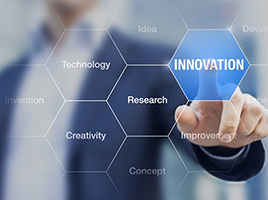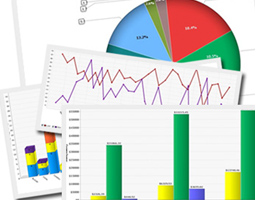One of the first decisions you have to make, once you’ve decided on which enterprise resource planning (ERP) system to implement, is how you will implement it. Essential to the character of any ERP system is its fairly regimented set of steps to be followed, which is necessary for successful implementation. While the final destination may be clear, the choice of route will be determined by a combination of factors such as time-frame, cost and business culture. Successfully charting the course for your ERP implementation will require that you decide upfront between two possible (routes) options: a waterfall methodology or agile development.

Waterfall ERP implementation
Considering the number of moving parts in the project, an ERP implementation is necessarily complex which, more often than not, seldom follows a linear progression. Requirements change and unexpected things happen. Nonetheless, an ERP implementation will have certain steps that always need to happen, following a set pattern which includes: discovery, planning, design, development, testing, deployment and support.
Even though there may be unplanned events threatening to derail the process, following these steps will not only keep the project on track, it will also provide clarity and comfort to those working on it and those waiting for the results.
Agile ERP implementation
While the waterfall approach was the choix par d’efaut for ERP systems over dozens of years, the last decade has seen a growing awareness as to the difficulty in managing specialised technology projects over extended periods of time with a waterfall mindset. What has emerged is an appreciation of a more agile understanding.
This approach, like the waterfall methodology, still requires the gathering of a substantial number of requirements up-front, used for guiding the project plan. The difference lies in what is done with this information, especially in the development and deployment stages. Work done at these stages is not completed in a linear fashion, rather, the agile methodology divides the project plan into short intervals called sprints. The end of each sprint is marked by a test, when adjustments are made in real-time.
So, teams are able to respond much more quickly to issues and changes during ERP implementation, negating the need to spend long periods of time on project development up-front, only to find that changes are needed along the way. An ERP implementation going exactly as planned is probably less sure than the likelihood of bumps and detours along the way. For this reason, an increasing number of ERP implementations are adopting a more agile implementation strategy.
Remaining agile once implemented
The need for an ERP system to remain flexible post-implementation is becoming as important as during its deployment. Sweeping changes, brought on by technology development and integration, are being immortalised under the banner of the fourth industrial revolution. This transition from the Internet of things to an Internet of everything will continue to put relentless pressure on business to keep innovating or risk becoming extinct.
Non-negotiable areas that must be in place, in relation to keeping your ERP adaptable to change, include having the appropriate technical architecture, business intelligence and, most importantly, to remain responsive in order to facilitate necessary changes quickly while still safeguarding profitability.
Data accessibility
Increasingly, customers are expecting an immediate response to requests or queries. Staying ahead not only requires that you respond speedily, but also that your teams have access to critical business information, so they can fulfil customer expectations and help you beat the competition. This can most easily be achieved through the use of mobile devices, giving access to important information to the right people at the right time. The adaptability afforded by mobile devices means your sales staff can start and close sales from anywhere. In addition, reporting and data analysis of critical KPIs on-the-go further illustrate the important benefits of having an agile mindset when it comes to your ERP.
Agility in utility
To remain adaptable in a changing business landscape, your ERP needs to not only meet your customers’ needs, it must also ensure productivity is maintained, efficiencies secured, and profitability optimised. To this end, there are three options worth considering. Should you implement your ERP on-premises, host it in the cloud or rather use it as a service?
* On-premises deployment involves the hosting of services on-site, requiring close co-operation with the ERP vendor to ensure the efficient and effective installation, implementation and maintenance of the ERP. You have full control over the system, including its security, backups, management and IT support.
* A subscription model is used in SaaS (software as a service) ERP systems, with the payment of a fee allowing use of the software, updates, servers and data. Everything is controlled by the vendor, with your IT team having no direct responsibility for the maintenance of the system.
* Deployment via a cloud hosted solution provides software that is Web-enabled but housed on remote servers all owned and managed by the ERP vendor. While very similar to a SaaS option, the main difference lies in where the information is hosted… the cloud. Access is gained through the Internet, and any user who has been granted access can login anywhere and at any time. A business that is set to grow rapidly may find a cloud-hosted option most suitable, since it allows deployment at scale with marginal cost implications.
In a business environment where the only constant is that change is inevitable, it is more important than ever to ensure you not only choose the type of ERP system most appropriate to your business and needs, but also that the method of implementation delivers the results you require.
It is a revolution after all.





